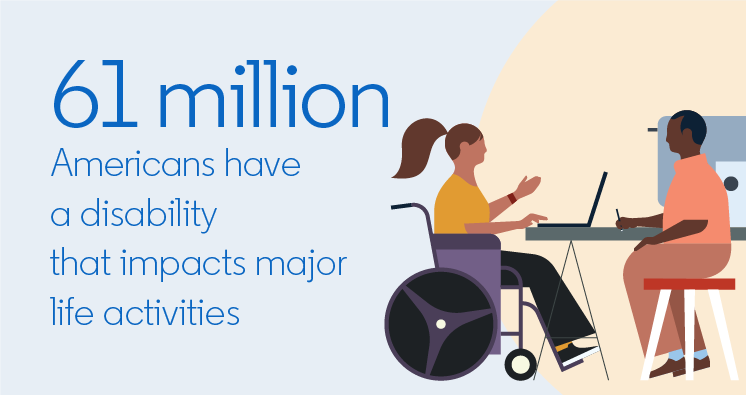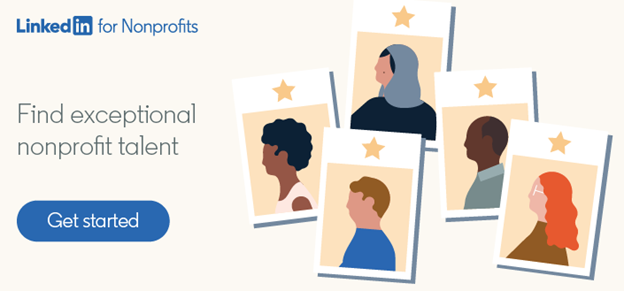
3 Steps Nonprofits Can Take to Build a More Disability Inclusive Workplace
In the U.S. alone, roughly one in four adults has a disability that impacts major life activities, according to data from the CDC. For nonprofits, this means that a significant proportion of their supporters and constituents likely have a disability, which may impact how they access services, engage with content, and more.
Having employees with disabilities at all levels of the organization is one way that nonprofits can improve the accessibility of their programs and better understand the ways that disability intersects with their mission. People with disabilities bring a unique perspective to their work, allowing them to identify opportunities and potential barriers that their peers may never have recognized or thought of.
In order to help employees with disabilities grow and thrive at the organization, nonprofits need to cultivate an environment where they are empowered to do their best work. Here are three steps you can take to get started.

1. Listen and learn
There are a lot of misconceptions out there about disability, and as such, there are many small ways that leaders and employees can inadvertently make coworkers with disabilities feel uncomfortable or isolated. Taking the time to educate yourself, your team, and your organization as a whole about disability awareness can be the first step toward building a more inclusive culture.
This can include outlining language that isn’t acceptable and sharing information and resources to help employees be more mindful of how they talk to and collaborate with their peers. It’s also essential to listen to employees with disabilities and continually adjust your policies and processes, based on their feedback. A well-intentioned plan may not have the effect you thought it would, so recognizing mistakes and calibrating shows that you’re listening and committed to inclusivity.
2. Ensure access
When people talk about workplace accessibility, they often picture things like ramps and service animals. While these reasonable accommodations are certainly important to think about, especially as more staff start to return to the physical workplace, ensuring that employees have easy access to the digital tools and resources they need on a daily basis is critical.
Rooted in Rights’ #AccessThat guides can be a great starting point for making digital materials more accessible to people with sensory disabilities, providing information on how to add captions, audio descriptions, alt text, and more. This isn’t just good for employees—it can also help you ensure that your external-facing content is accessible to a wider audience.
Additionally, some employees may benefit from or require assistive technology and other accommodations, so work with them to understand their specific needs. Avoid making any assumptions, and check in with them regularly to find out how things are going and whether they’re encountering any challenges that you can address.
3. Be flexible
Workplace flexibility can be especially meaningful for employees with disabilities, for whom lengthy commutes or set working hours may present significant barriers. If an employee has chronic pain, for example, there may be times when they need to step away and focus on their wellbeing. Having flexibility around when and where they work allows them to do so, giving them the power to shape their job around when they’re most productive.
As your organization thinks about its return-to-workplace plan, consider maintaining a strong element of flexibility to support employees with disabilities. Flexibility benefits everyone, so your whole team may welcome this change. By giving everyone more flexibility, you can also help to avoid any stigma around working from home or on a different schedule, ensuring no one feels singled out for doing so.
Build a more inclusive nonprofit
Disability is one dimension of diversity that is sometimes overlooked. These foundational steps can help you start building a workplace and culture where employees with disabilities can share their perspectives and talents to move your mission forward.
If you’re building or developing a nonprofit team, LinkedIn for Nonprofits can help. Reach out to learn more about our Nonprofit Talent Solutions.

